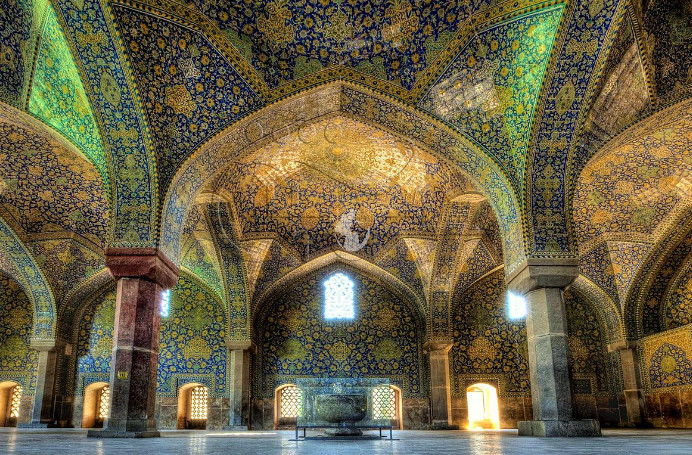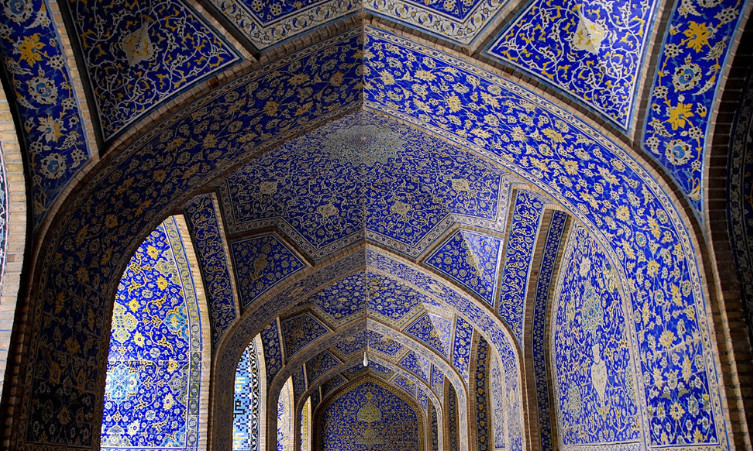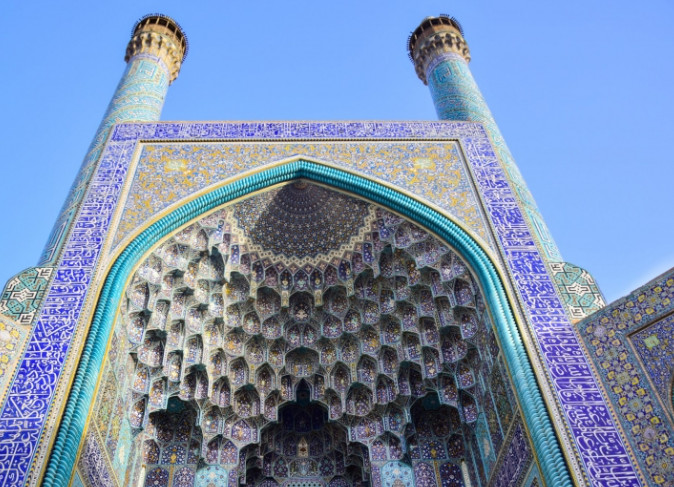Shah Mosque (Isfahan) + video
Persia, an ancient civilization replete with rich cultural tapestries, has birthed numerous architectural masterpieces throughout its storied history. The Shah Mosque in Isfahan, also known as Imam Mosque post the 1979 Iranian Revolution, stands out as one of the most iconic symbols of Persian artistry, spirituality, and architectural prowess. With its grandeur, intricate designs, and historical significance, the Shah Mosque is not merely a place of worship, but a testament to the epoch in which it was constructed and the enduring legacy of Persian craftsmanship.
Historical Context
Situated in the heart of Isfahan, the Shah Mosque was conceived during the Safavid dynasty under the patronage of Shah Abbas I in the early 17th century. This was a time when Isfahan underwent an architectural renaissance, with Shah Abbas intent on transforming it into a magnificent capital that would reflect the glory of Persia. The relocation of the capital from Qazvin to Isfahan was strategic and was meant to serve as a hub connecting the north and south of the vast Persian Empire. The mosque was to be the jewel in the crown of this refurbished city.

Architectural Grandeur
Upon entering the Shah Mosque, one is instantly captivated by its sheer size and scale. The monumental entrance portal, adorned with intricate mosaics and calligraphy, welcomes the visitor into a world of sublime beauty. This massive gateway, called the pishtaq, is emblematic of Persian mosque design. It’s not only an architectural element but also sets the spiritual mood, marking a passage from the material world outside to the divine space within.
The mosque’s layout follows a traditional four-iwan design, with four vaulted halls or iwans opening onto a central courtyard. Each iwan is a marvel in itself, but the main one facing the qibla (direction of Mecca) is particularly spectacular with its seven-color mosaic tiles showcasing exquisite geometric and floral patterns.
Another architectural wonder is the mosque’s dome. Standing at 53 meters in height, it’s a masterclass in Persian dome construction. Not only does it dominate Isfahan’s skyline, but it also possesses unique acoustical properties. The dome’s design is such that a person standing under its central point and speaking will hear their voice echo, symbolizing the echoing of divine messages.

Artistry and Craftsmanship
It’s impossible to discuss the Shah Mosque without delving into the details of its aesthetic brilliance. The craftsmen of the Safavid era were master ceramists and tile makers, and the Shah Mosque is their canvas. Haft rangi (seven-colored) tiles, a signature of this period, can be seen throughout the structure. These tiles, made by a sophisticated firing process, are characterized by their vivid colors and durability. They form a myriad of patterns, from geometric tessellations reminiscent of the universe’s infinite nature to floral motifs symbolizing the gardens of paradise.
Calligraphy, another central element of Islamic art, graces the walls, domes, and columns of the mosque. Extracts from the Quran and Islamic traditions, rendered in elegant scripts like naskh and thuluth, evoke contemplation and reverence. They intertwine seamlessly with the architectural elements, reinforcing the unity of design, message, and purpose.

Spirituality and Symbolism
While the Shah Mosque is an architectural and artistic marvel, at its core, it’s a place of worship and spiritual connection. Every element, from the vast courtyard symbolizing the universe to the mihrab pointing devoutly towards Mecca, speaks to the mosque’s sacred purpose.
Water, an essential element in Islamic rites, finds a place of prominence in the mosque’s central courtyard with its large rectangular pool. This water feature is not just utilitarian for ablutions but also serves as a symbol of purity, reflection, and the source of life.
The orientation of the mosque, with its main iwan facing Mecca, ensures that worshippers are aligned with the holiest city in Islam. This alignment is symbolic of the unified direction in prayer and the community’s collective spirituality.
The Role in Socio-Cultural Life
Over the centuries, the Shah Mosque has transcended its primary religious function to become an integral part of Isfahan’s socio-cultural tapestry. It’s not just a space for prayer; it’s a gathering place, a locus for scholarly discussions, and a reflection of national identity.
Isfahan’s residents and visitors alike find solace in the mosque’s serene courtyard, engage in philosophical debates under its towering iwans, and seek knowledge in its precincts. The mosque has, over time, been a silent witness to the city’s many transformations, from the grandeur of the Safavid era to the challenges of modernity.
The Great Mosque of Isfahan, also known as the Jameh Mosque of Isfahan or the Friday Mosque, is distinct from the previously mentioned Shah Mosque (or Imam Mosque) in various ways. The Great Mosque is one of the oldest and most significant architectural endeavors in Iran and stands as a testament to the evolution of mosque architecture over twelve centuries. Its uniqueness arises from multiple factors:
- Chronological Architectural Tapestry: The mosque provides a comprehensive visual guide to the evolution of mosque architecture in Iran from the 9th century onwards. Successive remodelings, extensions, and renovations over centuries have resulted in a complex structure that boasts architectural and decorative elements from the Seljuks, Mongols, Safavids, and later periods.
- Four-Iwan Layout: The mosque is often credited for pioneering the four-iwan architectural format, a layout in which four portals (or iwans) face a central courtyard. This format became a dominant template for large mosques across the region.
- Diverse Decorative Styles: Due to its long construction timeline, the mosque showcases an array of decorative styles. From the geometric patterns and Kufic inscriptions of the Seljuk period to the more ornate stucco work and muqarnas (niche-like cells) of the later Mongol era, the variety is unparalleled.
- Oljaitu Mihrab: This is a spectacular stucco mihrab (prayer niche) dating from the Ilkhanid (Mongol) period in the 14th century. It is famed for its intricate geometric patterns and inscriptions, which are masterpieces of Islamic stucco work.
- Winter Prayer Hall: This part of the mosque showcases some of the most delicate brickwork of the Seljuk period. The brick patterns and vaulting are visually captivating and provide insights into the architectural prowess of the era.
- Continual Relevance: Unlike many historical mosques which have ceased functioning in their primary religious capacity, the Great Mosque of Isfahan remains a focal point for the religious life of the city. Friday prayers, a significant weekly event in the Islamic world, are held here, hence its moniker “Friday Mosque.”
- UNESCO World Heritage Site: Due to its immense historical, architectural, and cultural significance, the mosque has been designated a UNESCO World Heritage Site. This status underscores its unique position not just within Iran but in the world’s architectural heritage.
In essence, what’s unique about the Great Mosque of Isfahan is its embodiment of a living timeline of architectural and decorative styles that span over a millennium. It isn’t just a monument; it’s a chronicle of the region’s socio-religious history, etched in brick, tile, and stucco.


